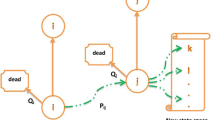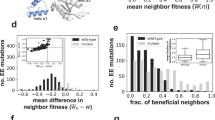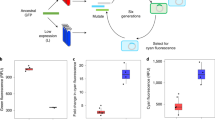Abstract
Proteins manifest themselves as phenotypic traits, retained or lost in living systems via evolutionary pressures. Simply put, survival is essentially the ability of a living system to synthesize a functional protein that allows for a response to environmental perturbations (adaptation). Loss of functional proteins leads to extinction. Currently there are no universally applicable quantitative metrics at the molecular level for either measuring ‘evolvability’ of life or for assessing the conditions under which a living system would go extinct and why. In this work, we show emergence of the first such metric by utilizing the recently discovered stoichiometric margin of life for all known naturally occurring (and functional) proteins. The constraint of having well-defined stoichiometries of the 20 amino acids in naturally occurring protein sequences requires utilization of the full scope of degeneracy in the genetic code, i.e. usage of all codons coding for an amino acid, by only 11 of the 20 amino acids. This shows that the non-availability of individual codons for these 11 amino acids would disturb the fine stoichiometric balance resulting in non-functional proteins and hence extinction. Remarkably, these amino acids are found in close proximity of any given amino acid in the backbones of thousands of known crystal structures of folded proteins. On the other hand, stoichiometry of the remaining 9 amino acids, found to be farther/distal from any given amino acid in backbones of folded proteins, is maintained independent of the number of codons available to synthesize them, thereby providing some robustness and hence survivability.

Similar content being viewed by others
References
Casanueva A, Tuffin M, Cary C and Cowan DA 2010 Molecular adaptations to psychrophily: the impact of ‘omic’ technologies. Trends Microbiol. 18 374–381
Crick, F 1970 Central dogma of molecular biology. Nature 227 561–563
Ermolaeva MD 2001 Synonymous codon usage in bacteria. Curr. Issues Mol. Biol. 3 91–97
Hershberg R and Petrov DA 2008 Selection on codon bias. Annu. Rev. Genet. 42 287–299
Jayaram B 1997 Beyond the wobble: the rule of conjugates. J. Mol. Evol. 45 704–705
Khorana HG, Büchi H, Ghosh H, Gupta N, Jacob TM, Kössel H, Morgan R, Narang SA, Ohtsuka E and Wells RD 1966 Polynucleotide synthesis and the genetic code. Cold Spring Harb. Symp. Quant. Biol. 31 39–49
Kimchi-Sarfaty C, Oh JM, Kim I-W, Sauna ZE, Calcagno AM, Ambudkar SV and Gottesman MM 2007 A ‘silent’ polymorphism in the MDR1 gene changes substrate specificity. Science 315 525–528
Kimura M 1968 Evolutionary rate at the molecular level. Nature 217 624–626.
King JL and Jukes TH 1969 Non-Darwinian evolution. Science 164 788–798
Knight RD, Freeland SJ and Landweber LF 2001 A simple model based on mutation and selection explains trends in codon and amino-acid usage and GC composition within and across genomes. Genome Biol. 2 research0010.1–research0010.13
Komar AA 2007 SNPs, Silent but not invisible. Science 315 466–467
Mezei M 2011 Discriminatory power of stoichiometry-driven protein folding? J. Biomol. Struct. Dyn. 28 625–626
Mittal A and Jayaram B 2011a The newest view on protein folding: Stoichiometric and spatial unity in structural and functional diversity. J. Biomol. Struct. Dyn. 28 669–674
Mittal A and Jayaram B 2011b Backbones of folded proteins reveal novel invariant amino acid neighborhoods. J. Biomol. Struct. Dyn. 28 443–454
Mittal A, Jayaram B, Shenoy SR and Bawa TS 2010 A stoichiometry driven universal spatial organization of backbones of folded proteins: Are there Chargaff’s rules for protein folding? J. Biomol. Struct. Dyn. 28 133–142
Nirenberg M, Leder P, Bernfield M, Brimacombe R, Trupin J, Rottman F and O'Neal C 1965 RNA codewords and protein synthesis, VII. On the general nature of the RNA code. Proc. Natl. Acad. Sci. USA 53 1161–1168
Sarma RH 2011 A conversation on protein folding. J. Biomol. Struct. Dyn. 28 587–588
Sharma M, Hasija V, Naresh M and Mittal A 2008 Functional control by codon bias in magnetic bacteria. J. Biomed. Nanotechnol. 4 44–51
Singer GA and Hickey DA 2003 Thermophilic prokaryotes have characteristic patterns of codon usage, amino acid composition and nucleotide content. Gene 317 39–47
Weygand-Durasevic I and Ibba M 2010 New roles for codon usage. Science 329 1473–1474
Yampolsky LY and Stoltzfus A 2005 The exchangeability of amino acids in proteins. Genetics 170 1459–1472
Yang D, Jiang Y and He F 2009 An integrated view of the correlations between genomic and phenomic variables. J. Genet. Genomics 36 645–651
Zhang F, Saha S, Shabalina SA and Kashina A 2010 Differential arginylation of actin isoforms is regulated by coding sequence–dependent degradation. Science 329 1534–1537
Author information
Authors and Affiliations
Corresponding author
Additional information
[Mittal A and Jayaram B 2012 A possible molecular metric for biological evolvability. J. Biosci. 37 1–5] DOI
Rights and permissions
About this article
Cite this article
Mittal, A., Jayaram, B. A possible molecular metric for biological evolvability. J Biosci 37, 573–577 (2012). https://doi.org/10.1007/s12038-012-9210-x
Published:
Issue Date:
DOI: https://doi.org/10.1007/s12038-012-9210-x




